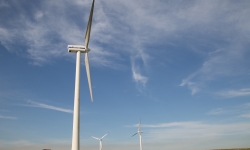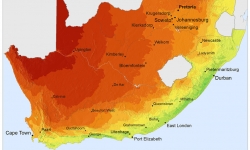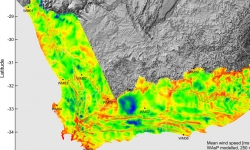Wind and Solar PV Resource Aggregation Study for South Africa
The potential to produce electricity from wind turbines in South Africa is significantly greater and more widely spread than initially thought. This was the finding from a study undertaken to quantify the combined effect of wind and solar energy resources in the country.
The overarching objective of this study was to increase the fact base and the understanding of aggregated wind and solar photovoltaic (PV) profiles in South Africa for different spatial distributions of a hypothetical wind and solar PV fleet. The study outputs can serve as input into South African energy-planning processes such as the Integrated Energy Plan (IEP), the Integrated Resource Plan (IRP) for electricity, strategic grid planning, the Transmission Development Plan (TDP), wind and solar PV Strategic Environmental Assessments (SEAs).
The study results show that across South Africa, solar photovoltaic (PV) and wind resources are good enough to be able to produce globally competitive solar and wind power and that over 80% of the land mass has enough wind potential to achieve a 30% average annual load factor. The load factor is a measure for the average utilisation of wind turbines. In countries like Spain and Germany, which are known for their good wind resources, actual average load factors of the entire wind fleets are 25 – 27% and 20 – 23%, respectively. The ‘good wind’ resource is not restricted to the Cape area, as was previously thought, and therefore, wind plants can be established almost everywhere in South Africa.
The results also indicate that wind and solar PV installations can provide a smooth power output when the power plants are dispersed over a large area. Consequently, short-term fluctuations in the combined aggregated power output can be avoided almost entirely by spreading solar PV and wind power plants across the country. This, in combination with the cost competitiveness of wind and solar PV, means that these two energy sources can economically and technically supply bulk power to meet large parts of the country’s electricity requirements.
Furthermore, the results indicate that power output from wind and solar PV plants do not happen at the same time, they complement each other, which benefits the power system. Solar PV output is higher during the day and wind output is higher in the evening, which is ideal for meeting the evening peak load.
The results of this study will be used as input to South Africa’s strategic grid plans and the Transmission Development Plan. The high-quality, high-resolution wind and solar PV resource data is already being used in the modelling of the revision to the Integrated Resource Plan. The datasets have been made available to the public.
Information to download:
- Presentation: Public presentation of results (3 March 2016)
- Video: Public presentation of results (3 March 2016)
- Final Report: Report







